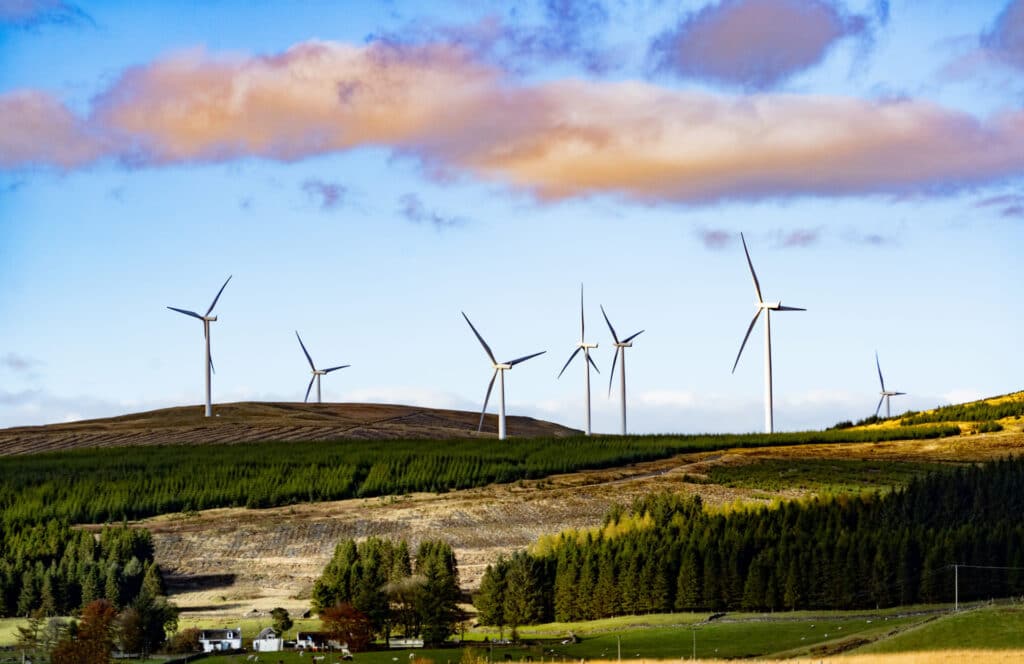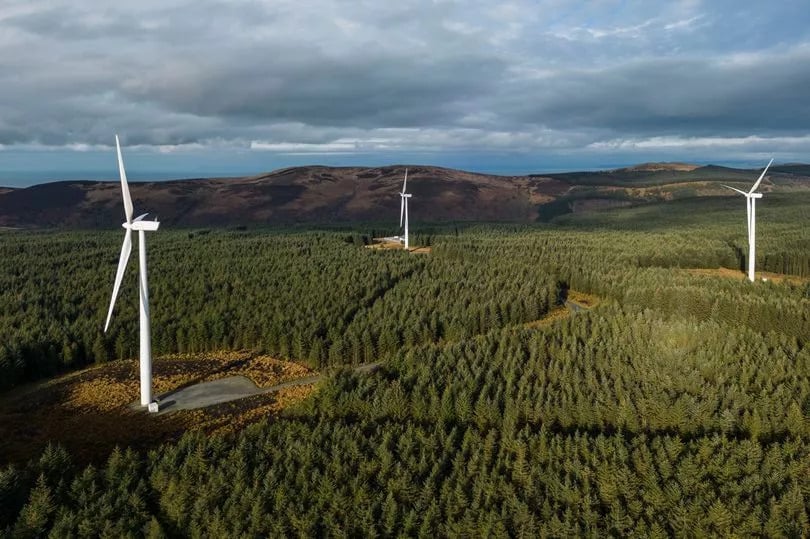The Scottish government has cut down almost 16 million trees on public land as part of a significant drive to erect wind turbines.
The staggering number – about 1,700 trees per day since 2000 – is part of an SNP policy to transition to renewable energy.
As reported in the Telegraph, Mairi Gougeon, the Rural Affairs Secretary, said Forestry and Land Scotland (FLS) managed the programme with wind farm developers undertaking “compensatory planting elsewhere”.
Liam Kerr, Scottish Conservative MP, said the public would be “astonished” at the total and cited concerns about the developments raised with him “by communities all over the country.”
Scotland already has turbines theoretically capable of generating 8.4GW of power, well over half the UK’s total, but SNP ministers want to add a further 8-12GW.
Protections watered down for unspoiled wild land.
Their latest planning framework relaxes controls on building more turbines, with protections for unspoiled wild land watered down.
According to the John Muir Trust, the new threshold for allowing wind farm companies to build turbines on wildland is so low that it appears impossible for them not to meet it.
The SNP wind power target also includes replacing existing turbines that may be coming to the end of their working life with even taller and larger versions, a process called “repowering”.
Wind turbine repowering aims to use technological advancements to increase wind turbine efficiency and generate more power from an existing station.
It emerged earlier this year that some developers want to erect turbines up to 850 feet tall, the equivalent of more than 60 double-decker buses.
In a letter to Mr Kerr, dated July 13, Ms Gougeon said 7,858 hectares of trees had been cut to make way for wind farms since 2000.
With an average of 2,000 trees per hectare, she said: “This gives an estimated total of 15.7 million trees felled to facilitate windfarm development.”
The minister added: “Removal should only be permitted where it would achieve significant and clearly defined additional public benefits.
Scotland is “all in” with wind technology.
Scotland is at the forefront of the push towards wind technology.
In 2019, the Financial Times reported that a global slowdown in balsa wood led to a slowdown in wind-power projects.
Major wind turbine manufacturer, General Electric, uses fibreglass fabric and balsa wood to manufacture the blades.
Last month, UK energy firm Renewable Energy Systems (RES) signed a letter of intent to use around 20 towers annually from 2026 to 2036.
RES has developed or constructed 21 wind farms in Scotland with a total capacity of 597 MW.
In partnership with Modivion – a Swedish start-up – Scotland is looking to transition from steel-based turbines to all-timber turbines made from Laminated Veneer Lumber (LVL).
Modvion erected its first 30m wooden wind turbine tower on an island near Gothenburg in 2020.
It plans to produce a full-scale commercial 150m wind turbine tower using LVL constructed from Scandinavian spruce – reducing carbon by up to 90%.
Scotland, with its abundance of Sitka spruce, is well-positioned as a major supplier for this new turbine construction.
“We currently use Scandinavian spruce, but any soft wood works, including Sitka spruce. Scotland is very much possible for supplying raw material for wooden towers,” according to a Modvion spokesperson.
‘Developers must provide compensatory planting.’
“Where woodland is removed in association with development,” Minister Gougeon, “developers will generally be expected to provide compensatory planting to avoid a net loss of woodland.”
She said many of the felled trees would have been “replanted on-site” or replaced elsewhere, and the vast majority were part of a commercial crop that would have been chopped down anyway “at the end of their rotation”.
But Mr Kerr, a Scottish MP, said, “Most people will be astonished to see the number of trees cut down to make way for wind farms.”
He said ministers “must be alive” to the “significant costs” that could be incurred with the siting of wind farms.

FLS said it had planted over 500 million trees since 2000, and the quantity felled for wind farms equated roughly to its annual harvesting programme.
A spokesman stated, “Renewable energy generated from wind farms is a key element in Scotland’s response to the climate emergency and the shift towards net zero.”
He also noted, “The infrastructure on land that we manage generates enough power for 600,000 homes.”
According to Morag Watson, Director of Policy for Scottish Renewables, “the volatile price of imported gas has left energy consumers suffering some of the highest prices in living memory.”
“The climate emergency,” she said, “means we need to cut the amount of carbon we emit as quickly as possible.”
Building new wind farms, she says, represents the cheapest form of power generation and tackles both problems at once.







